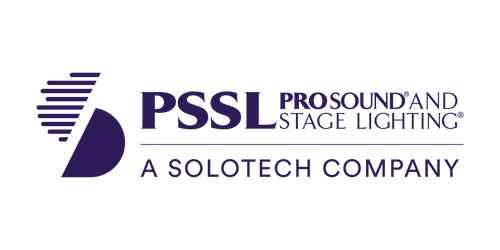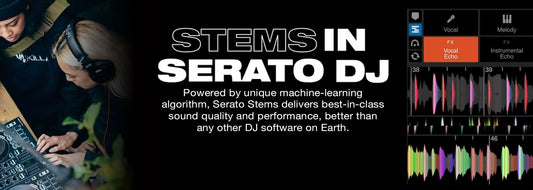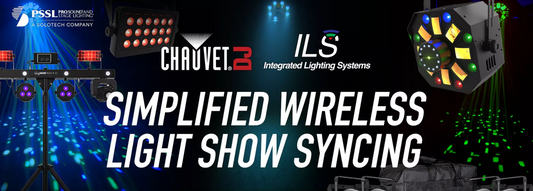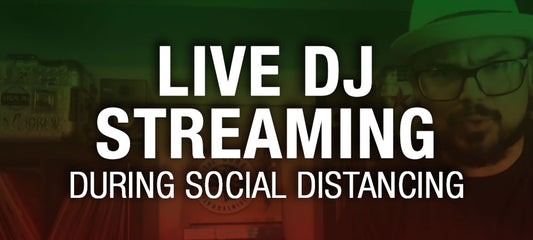Welcome to the pssl.com; Prosound and Stage Lighting Podcast, where we invite an industry expert to explore the latest innovations and trends in professional audio and entertainment lighting while reminiscing the rich history of our exciting field. Be sure to subscribe to this podcast for future episodes. For more information on today's topic, visit pssl.com. Where you can access the product specs, peer reviews and real-time inventory.
Subscribe now on Apple Podcasts
Subscribe now on Spotify
Brent: All right. Welcome, everybody to the first-ever PSSL; Prosound and Stage Lighting Podcast. My name is Brent Young. I'm the Vice President of Sales and we're here today with someone that I've known for a really, really long time, Mr Tim Edwards of Tim Edwards marketing. Welcome!
Tim: Well, thank you Brent.
Brent: Good to have you here. Now how long have we known each other, you think?
Tim: Whoa, oh goodness 30 years I think.
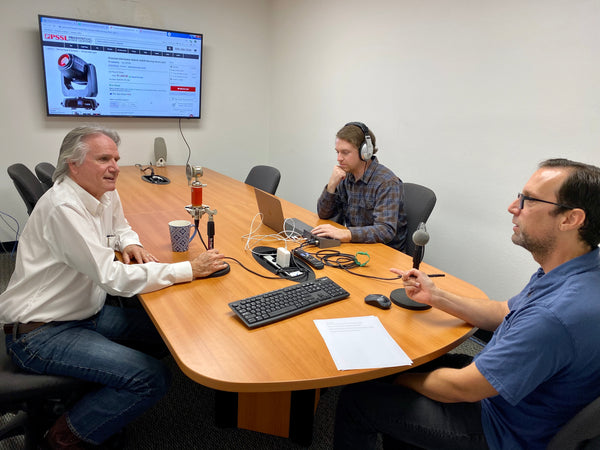
Brent: Yeah, coming upon it. It feels like it. I remember the first time I ever met you was any training with our sales staff. I was one of the salespeople and you were training us on lighting at that time.
Tim: Wow.
Brent: And so it all comes full circle brother because here we are today in front of these microphones where we get to talk about lighting; stage lighting and entertainment lighting and how it is in the industry today. So --
Tim: Let's do it.
Brent: Excited to have you here. So, you know, I want to get into what products you're excited about and what's going on. But first, let's just back up a little bit. Where and how did you first get involved in entertainment lighting, stage lighting?
Tim: Well, that was the manufacturer's rep in primarily in the audio and music like as in instruments; guitars and so forth. And went to a trade show called National Sound Contractors Association. And there, these are tabletop displays so not these big conventions where there are big trusses and so forth. It was a tabletop display only and there was a light shine on the ceiling. So we went over there to look at it and we were kind of DJ centric at that time. We had some turntables we were selling and DJ mixers and so forth. And this was Martin, out of Denmark, Lighting's first trade show in America.
Brent: Oh wow.
Tim: And they had the moving mirrors, 10-04s they are called. 250-watt halogen lamp that projected four gobos and four colours and that were it.
Brent: Nice.
Tim: And so we said hey, we think we can sell this stuff to our DJ customers. And they also do nightclub installations and so forth and that's how it started. So the first, our rep firm which I was working for another company at that time, Myer Ross and there was another rep firm in St Louis or something, were the first two rep firms in the United States for Martin Robotic Lighting.
Brent: Nice. Wow. And how did that go?
Tim: Oh, we killed it. We, did so super good and Martin you know as we know today became extremely successful, was leading the industry and a lot of innovation and it, you know, it helps me to get to know all the people that were in the lighting business. And at that time, it was such a small subset to the market as opposed to audio. But it's become so much more sophisticated and important and like they say a show without lighting is just radio.
Brent: Nice.
Tim: Yeah.
Brent: That's true. Now for our listeners, you mentioned Martin, what are other brands along the way? If we just kind of start with Martin, if you were to recollect, what are some of these other brands that you've been involved with and what are the markets may be that those lighting manufacturers have been servicing?
Tim: Well, we also sold at that time Leprechaun lighting which was heavy on the dimmers and the control. And they were just getting into DMX at that point. At this point, DMX was just beginning. Up to then, it was all analogue. So, Martin, another one was a Kalmar which is an Italian company. And the Italians were, their lights were very much like Ferrari's. They were on the bleeding edge of performance and output and so forth but they're, you know, kinda finicky. And then after that ROBE Show Lighting which is the Czech Republic. And at that time, ROBE had been doing OEM business. In other words, they 'private label stuff'.
They would make a light and put someone else's name on it. So the ROBE product in the US may have been, it would have a different name than one that was maybe in Brazil or in Hong Kong. They would make lights and put someone else's names on them and they had built up quite a business and became, got to where they made a very, very, very good light and decided to go ahead and break it out into their own name. And so I worked with ROBE as well and then got out of the business for a while and then came back and I got involved with CHAUVET and I'm very thankful for CHAUVET picking me.
Brent: Nice, yeah. Now Tim has been involved as he mentioned with a PSSL and the lighting business just about as long as you've been repping. I remember distinctly Kalmar and Leprechaun training with you. So that was, that's cool. We'll come back to that.
Tim: Sure. I used to go to Prosound when you guys were on Beach Boulevard near Talbert.
Brent: That's right.
Tim: It was a storefront that was maybe 20 foot wide and 80 foot deep or something 60 foot deep.
Brent: Yeah, yeah, been doing this for a long time, right. So I think, so we're celebrating 44 years as of this podcast right now. So we've seen a lot of changes. And that's what's so great about having you here is because you've seen those changes in the industry. And you know on that note with the changes, what are the changes or what are the things that's got you most excited about the lighting industry right now for stage and entertainment?
Tim: I think it's we've been kind of sistered along with or we've been benefactors of technology, how it's grown so quickly. And the efficiencies that come out of technology not only in the software side where we think of it in terms of the industry but in terms of like the LED products coming out with long lifespans of their, the source, the light source itself. And the output is just getting better and better all the time. So I think that's really it. The efficiency savings are nice you know if you have a heart for the environment, certainly and I do. But I just liked being able to change colors on call.
Brent: Yeah.
Tim: In a moment's notice, you decided you wanted a different color, you get a different color.
Brent: Yeah, yeah, endless color options, right?
Tim: Yeah.
Brent: Pretty much with color mixing it with LED. There's a lot of cool stuff going on with that I remember -- That's a real podcast right there, you are in our store and you are hearing customers come in and pick up sound and lighting equipment. So no need to edit that one out. We've had, you know, it started with RGB and it started with very small diodes, right?
Tim: Yeah.
Brent: 10-millimetre diodes which are a tiny amount of power and therefore quite honestly a tiny amount of output unless you put a gazillion on the face of the LED. And where we are at today with LED chips and both in stage lighting and moving heads and washes where are you seeing that going?
Tim: Well, I believe the leading edge of what you're going to see more and more multicolored chips because the color rendering, in other words, the way a color spectrum is seen on camera or by your own eye is there improved when you have more and more of the color spectrum in the light. And they're talking about pars for the most part. The RGB Amber was the first breakout of going beyond RGB because the Amber has so much to do with rendering flesh tones better. And also in our organic world and you're doing a wedding at a barn or in the backyard of someone's home, the Amber helps a lot with the wood in the barn or the green in the trees.
Then RGB Lime came in and that helps even more with the colors of the skin tones and also creating a better white light. On the moving yolk side of it, we've still been able to take advantage of advances in white light. Our industry with its RGB and RGB Amber and Lime and so forth, it's such a small industry comparatively to the rest of the world and what the world wants. The world wants brighter white LEDs for their warehouses and supermarkets and streetlamps. So that the acceleration and efficiencies in white light have been much steeper, the advancements then in the RGB sort of product. So consequently we've really, we're taking in our moving yolks whether it's a spot or a beam, mostly spots though. We're using white light emitters and kind of doing it as a hybrid of old school where before maybe it was a lamp and then when we do cyan, magenta, yellow filters to get color crossfader --
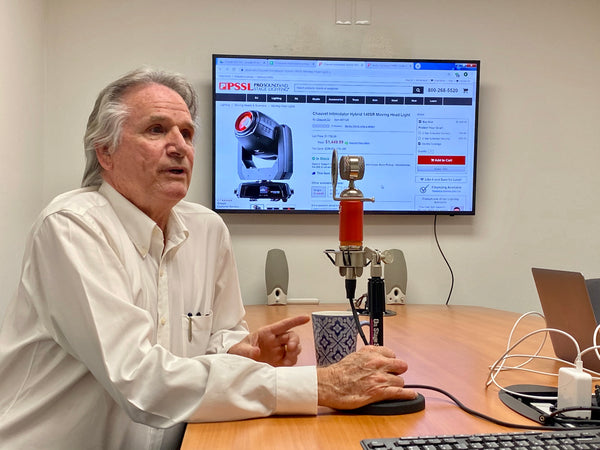
Brent: Yeah, that's CMY, yeah.
Tim: We are now, we're using instead of a discharge lamp, you know, HMI lamp or MSR lamp, now we're using white LED emitters because they just get brighter and brighter all the time because everyone wants to sell. We can sell a few thousand moving yolks. But if you were selling warehouse lights or street lamps to a city or airport parking lots and home depots, you know, for their warehouses, oh, you can sell thousands of them. So the advances has been greater there because there's much more money on the table.
Brent: Yeah, yeah. Understood. Now one of those customers that we serve that's in this kind of subset market that is benefiting from Amber and all the other cool kind of chips that are involved and the white light engines that you mentioned are our 'house of worship' customers. So one of the things that I get asked a lot is, you know, hey Brent, we're 50 seats or we're 250 seats or maybe up to a 500 seat house of worship and we're really trying to take the lighting experience to the next level and really have it reflect what we're trying to do with the message or the worship experience. That being said, what, are there like maybe two or three pieces of advice that you have for a small to a medium house of worship with regards to lighting? And let's just say they have either none or they have all halogen lighting to start with.
Tim: Yeah, up to this point, they've taken their halogen lighting, their par can and they've put gels in front of them or color filters. So they, it starts off as a white light and they wanted to get blue out of it. The blue gel or filter really rejects every color of light in the white light except allows the blue to come through. So when we go into a church and we look at where would we make improvements, generally anything that is a par can with gel on it, that's got to go. That's where you put it in its place. And --
Brent: Is that because of inefficiencies?
Tim: Not only efficiencies but you've got a single par can up there that's a one-trick pony. It's blue forever, nothing else until you get on your ladder and change that filter --
Brent: Or you rent your lift? Depending on how high your ceilings are, right?
Tim: Right. And that's a problem especially with [inaudible 13:16] that have rigged auditoriums. In other words, slanted auditoriums like theatres have. So anyway, yeah, we replaced anything that has a gel on it with an LED par. So you can change color at will. You never have to go up there and change the lamp ever. I mean, really these are going to last you, you'll give these to your kids, you know.
But that's the first place we go in terms of just like giving them some color so that when they go into the worship experience, you can have, there's much more emotion in color than there is in white light. You can change your emotions and direct people's attention, their eyes to perhaps the worship leader or whoever is singing that song at the time. And the rest of the people, so they would be in the white light, we direct their eyes with our white light and then the rest of the folks can be blue or whatever. And so you began, they focus and just helps.Brent: Yeah. I know that CHAUVET, in particular, has been making advancements in the offering that they have towards the 'house of worship' ever since LED started to come out and even before that. So yeah, that's great. The way that lighting is evolving, it's just so interesting. And the way that control is evolving too is there -- What would you say with regards to people that are maybe concerned; 'oh, this is complicated' or 'I don't know what all that means and I'm scared of control'? Is there any kind of, how would you assuage their fears?
Tim: Well, it's gotten so that now the lighting controllers, it's all software, it's computer-based, chip-based, right? There's some little engine in there crunching the numbers. Then control is now are so much more gooey graphic user interface displays. So that you can just look for an icon or a feature that you want, an effect that you want, you look at it, find the name of the box, the icon. You push it with your finger and it comes up and you get it.
Brent: Yeah.
Tim: So, it's so much easier. It's so much like your phone. You know, everyone has a phone now and they navigate around it you know. It's fun. I don't want to disparage the older folks but young people, they sit in front of our controllers now, they just go, oh, in about five minutes they'd got it. And it seems like the younger they are, the better they are. You know?
Brent: Yeah. So if you're, if you have a tech team for your house of worship and you have access to a younger user, one of your pieces of advice would be to get them in front of the controller because they're just going to get it.
Tim: Yeah. But we also, so we have a ChamSys, a little commercial here, ChamSys QuickQ series and there's a lot of faders on it. And so it can be set up so that you can have an exotic if you will, a worship experience on Sunday. But if on Monday afternoon there is a women's tea that's going to plan for this holiday season event that they have every year, the church secretary can go up to that console and just throw one fader. And okay there, it's the pulpit slit that's where the person leading the meeting for the, you know, women's tea and it's a very, very easy. You throw one fader and there's a look, it's all done. You don't have to be an expert. Can I do one quick commercial?
Brent: Sure.
Tim: So there is a very, very popular ellipsoidal that we were probably one of the first to market with an LED version of it. And it's been highly regarded and very, it's just been the ellipsoidal on Broadway, in a theatre and so forth. And is being so because of its 300-hour lamp. It has a beautiful color temperature and the brightness and so forth. And churches have bought lots and lots of them but then they go, well, 300 hours goes by really quickly.
Brent: Yeah.
Tim: So then the next time they order a lamp to replace it and go up on the lift and change it, we'll get the 2000-hour lamp. And so two things happen. They lose output. That lamp just does not burn as hot and as bright as the 300-hour, that's why it can last 2000 hours. So you lose brightness and you lose color temperature. It's more yellow than the original 300-hour lamp. So in our ovation product when people compare our ovation to this standard in the industry, this other company they need to remember that judge it against the 300-hour lamp.
That's what we went for and that's what we are replacing, that's what we performed like. And a lot of times they think, well we've got this 2000-hour lamp, why do I want to change? Well, you want to change because of two reasons. One; we have that 300-hour lamp output and color and when you want to match the intensity onstage for your camera shot so the guy doesn't walk from left to right on the stage and going through zone; one, two, three, four, five and there are different outputs in the cameras kind of wigging out. Well, how bright are you going to be, pal?Brent: Yeah.
Tim: With ours, you can dim it to exactly the kind of output you need. So you have a perfect intensity across the stage as the guy walks around and not change the color temperature. Because with the regular old burning lamp as you dim it, you go more towards yellow and more towards the yellow. So what you have to do with those burning lamps, you have to choose the lowest common denominator. In other words, the lamp has the least output then knock down the output of the others to match it.
Brent: Yeah, to get a true apple to apple comparison. And then you're also picking up as we've been talking about the efficiencies of the LED engine, right?
Tim: Yeah.
Brent: So you get that and the color temperature. Now, let's kind of transition out of maybe just house of worship customers and talk about entertainment, DJ, production companies. I'm gathering that a lot of advancements there had to do with like battery life, right? Can you comment a little bit on what's going on with battery-powered lighting for those folks?
Tim: Sure. It's pretty much been limited to the uplight and par business right now because they pull so little energy. As an example, I believe we take a 300-watt regular discharge or rather halogen lamp or maybe it's a 500-watt halogen lamp --
Brent: Which produces a ton of heat.
Tim: A ton of heat and is pulling 500-watt. So if you had to have a battery hooked up that's a lot of power to pull. And we put a red gel in front to make it red and you're pulling roughly, let's just 500-watt, you're going to get about 50-watt of white light or rather red light out of that. If we took any equivalent par that just turned on, the red LEDs is somewhere around 7-watt, 8-watt of consumption. So that's why the battery stuff works so well with the pars.
The advantage to it for the DJs and production companies and so forth is that uplight package that they have in the ballrooms or wherever at the golf course, you know, banquet room and so forth, they can wait till the last minute to put out those uplights literally the last minute. Because sometimes, oh no, the cake's not supposed to be there, suppose to be over here. So if you had to then pull up your electrical cables and your DMX cables to change the look because now they want to put the wedding cake there or the ice sculpture there or the DS for the wedding party there, 'your lights can't be there', 'I'm sorry'. 'Oh my goodness'.Brent: Yeah.
Tim: And then how do you go over the doorways, you know, with that stuff with the cables. So yeah, these guys can come in at the very, very last minute, put their lights where they want them, turn them on, showtime. I have a customer who likes to tell me a story where they, it was a corporate event and 'hey, I'm down here at the Biltmore hotel' and this is so awful and drab, it's terrible. Can you do something? So he grabbed, you know, a couple of dozen freedom pars, put him in his trunk. Drove down there just turned them on blue, lit up the room, got a nice big fat check for it and it took him all of the drive there it was an hour.
Brent: That was the worst part.
Tim: Right. It took him 15 minutes to do the gig and you know, the customer was thrilled.
Brent: Yeah. So lots of efficiencies and mobility with battery and then also with wireless DMX as well. You know, just throwing that DMX out there for those of our listeners who are again, kind of afraid by what is DMX and that's scary. If you had to just really, really simplify it which by the way, Tim has done for countless up and coming lighting professionals including dozens of PSSL folks over the years and myself. How would you, if you had to just really simply describe DMX for someone who's kind of like, I don't know what that is, I don't know what to do with that. Well, how would you describe that?
Tim: Well, technically it's called Digital Multiplexed and it's a signal. It's data. It's data just like goes from your wifi box to your computer wireless thing. Much like the TV that you look at today, you have no idea what that signal is like going to the TV. So you really don't have to know about DMX, what it is, you're just looking at the display and you know that it works much the same way. The controller that you use that spits out the DMX signal like I said you're looking at a gooey now, for the most part. You're looking at a screen that says red or blue or green, choose this fixture and make a move here and so forth. You don't really need need to know DMX. You just need to know a little bit about a controller and that's all. Once it leaves that controller, it kind of takes care of itself. It's like the TV set knows how to disseminate the digital information given to you, you don't have to know why.
Brent: The images that are gonna, yeah, going to be on your TV. It's speaking a certain language and it's talking, they're talking to each other end to end and so yeah. That's good, yeah. DMX is very similar to that, it's a language for lighting. You don't really have to know exactly how it works, you just need to know that it works.
Tim: Yeah. You just have to know the interface, you know the little, you know, how to navigate.
Brent: All right, now transitioning to our showroom. We're here in Southern California and PSSL and Tim and CHAUVET had just actually made a rather sizeable investment in the folks of Southern California being able to come in and really experience and see proper stage and entertainment lighting. So if you don't mind, I'd like to go and just walk through a couple of the products that you have put in the showroom recently. And these are all on display for our fabulous Southern California customers to come down and see.
We're as you know, probably from the website; pssl.com. You're going to notice there is a Contact Us and therefore there's a showroom link there with a map. So come on down, we're right off the 405 freeway. If you live in Southern California, you know exactly that freeway because you dread driving on it. Now, the good news is that we're right off the exit. So we're here for you in our showroom, open Monday through Saturday currently.
So Tim some of the fixtures that you've put in, some of the highlights there, do you want to pick a couple that you think are really kind of something that you just have to see you in person? I know they all are like that but are there a few that you want to a walkthrough? You got to see it in person, here's why and here's maybe what this will do for a specific customer.Tim: Well, there is, when I think of a house of worship or even nightclub or entertainment, it's either a haze environment, meaning you look at beams coming through the air or it's not. Right? A lot of churches just don't want to go that far. I'm even Bethels, a very popular church amongst the worship community and they don't use haze. So, but they do have a lot of moving yolks up there. But if you wanted to use haze and want to see beams, I think I would look at the Intimidator Hybrid 140.
When we say hybrid; a hybrid is a combination of a feature set. So it has a regular go selection that would be like any moving yoke, any spotlight but also has beams. When we say beans, we're talking more about a pencil beam if very, very sharp tiny beam that pierces through that fog for a long, long wave. It also has then a frost filter in front of the LED and color wheel so that you can use it as a wash. It's not its strongest feature, there are if you're looking for a wash light, I would get a pure wash light. But it does allow you to have three feature sets in the light; a spot, a beam and a wash. That's a little killer light, I like that guy.
Brent: Yeah. So you have one fixture or let's say a pair of fixtures or four, it depends on what you need and it's taking up this footprint and yet it's accomplishing three different looks for you if you like. Right?
Tim: Yes.
Brent: So that's a really good one. That the CHAUVET Intimidator Hybrid 140. And that is on display in our showroom again; a spot, a beam, and a wash kind of all in one there really, really cool. Well, what else are you looking at there, Tim?
Tim: Well, I do like, we will get back to that par light that has the RGB plus Amber or RGB Amber White plus UV. These multi-chip lights are very, very good for a stage lighting in that you can change the atmosphere in the worship experience or in the showtime if you will, with colors and change them at will. But then when it comes time for the pastor to speak and you just want white light, you can make a very, very, very good white light out of it.
So that has a multi-feature multi-use for the house of worship. And we see the same thing. I have a friend says hey but it's all theatre, right? And it's, so the church experience in terms of the theatre is the same thing as you would find at a high school or college theatre school. Same techniques, same tools you know, it's all very, very, very similar. So if you have a student in your church who's in the theatre department, they're going to be of great help if you can get them.
Brent: Yeah. That's the place to recruit for sure. Now, what about on the production side? So these are folks that maybe have graduated beyond speakers and a couple of lights on a stick and are kind of doing a full immersion thing. Maybe they're rolling out trucks with truss on them as well, doing displays, TV displays throughout doing certain looks throughout the room, trying to match colors like you mentioned for the Biltmore hotel. Is there a fixture or two that kind of stands out to you that's on display here at PSSL that you are saying you got to come to see this to experience it?
Tim: Yeah, I think in a light show, the first moving yolks were color wheels. So if you wanted to go from red to blue, there might be a green in between the two colors on a color wheel. So to go from red to blue, it'd be like red, green, blue. And it's just not very romantic. It just doesn't do much for your, the feeling you're trying to get people immersed and at peace. And like immersed means I think in part like we're all one together. And that same thing with concert.
Brent: Common experience, right?
Tim: Yeah.
Brent: Yeah, that's key.
Tim: So with the Maverick, we have up there, it is a white light emitter and CMY color flag. So you can crossfade gradually or snap to a red to a blue or any color in between. Just like when you look at your ink cartridges in your multicolored printer, those are CMY inks and that's why we're using CMY in our light. Those secondary colors a little bit brighter and you mix two secondary colors to get a primary color. I would look at that because it will, does allow you to change a mood, change segue from one scene to another without having to black it out and come up with that second color. Right?
Brent: Nice. Yeah, good advice. Good advice. So invite you to come on down. Tim has got a full set up of these fixtures that we mentioned and about I don't know what, two dozen more maybe 30 more fixtures. There's a lot --
Tim: There's a lot up there, yeah.
Brent: And it's all controllable by the user at a station with the ChamSys controller on. And which model of ChamSys is that?
Tim: It's the QuickQ 20.
Brent: QuickQ 20.
Tim: It's two universes of DMX and it also has, it's nice, it has a nice feature where it sets up a little wifi network there in the room and you can use a tablet, like an iPad as an extra screen and take that screen with you to another the location and control the lights. So if you didn't want to have a tech person at the venue for a small meeting, the pastor could have that tablet up there at the pulpit and change colors. 'Hey, we're going to show, you know, I want to show a video now of what we're going to do.' He can dim the lights from the pulpit.
Brent: Nice. That's kind of neat.
Tim: They user is in control like that.
Brent: Yeah.
Tim: I like that. What we've tried to do is we've tried to choose fixtures that have different price points and features sets. So we go from entry-level kind of stuff to the top end stuff that we have on tours and so forth and TV shows. You can see some of that stuff here at Prosound.
Brent: Well, as mentioned Tim has been instrumental in countless PSSL sales advisors learning DMX. So we're here to help you along the way with anything that you need with DMX addressing or understanding its implications for your lighting. So right on. I really appreciate you coming in and talking to us about that.
Tim: Well, thank you. I enjoyed it and you guys have been very, very good. I will say a little commercial for PSSL. When you come here, they are educated on lighting and it's a little tough to find folks that are educated in lighting and these guys do a good job and I've enjoyed the relationship and it's all good.
Brent: Right on, thank you, Tim.
Tim: You're welcome.
Thank you for listening to explore this topic further and to send us your feedback on this podcast. Please visit us at pssl.com where you can access product specs, peer reviews and real-time inventory.
